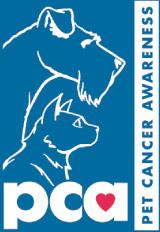 By Olga Naidenko, Rebecca Sutton, Jane Houlihan, April 2008
By Olga Naidenko, Rebecca Sutton, Jane Houlihan, April 2008They are trying their best to warn us.
In the first study of its kind, Environmental Working Group found that American pets are polluted with even higher levels of many of the same synthetic industrial chemicals that researchers have recently found in people, including newborns.
The results show that America’s pets are serving as involuntary sentinels of the widespread chemical contamination that scientists increasingly link to a growing array of health problems across a wide range of animals—wild, domesticated and human.

Source: Analysis of blood and urine from 20 dogs and 37 cats in study conducted by EWG. Laboratory analyses by AXYS Analytical, Sidney
In recognition of the unique roles that pets play in our lives, the Environmental Working Group (EWG) undertook a study to investigate the extent of exposures pets face to contaminants in our homes and outdoor environments. In a novel study representing the broadest biomonitoring investigation yet conducted in pets, what we found was surprising.
Dogs and cats were contaminated with 48 of 70 industrial chemicals tested, including 43 chemicals at levels higher than those typically found in people, according to our study of plastics and food packaging chemicals, heavy metals, fire retardants, and stain-proofing chemicals in pooled samples of blood and urine from 20 dogs and 37 cats collected at a Virginia veterinary clinic.
Average levels of many chemicals were substantially higher in pets than is typical for people, with 2.4 times higher levels of stain- and grease-proof coatings (perfluorochemicals) in dogs, 23 times more fire retardants (PBDEs) in cats, and more than 5 times the amounts of mercury, compared to average levels in people found in national studies conducted by the Centers for Disease Control and Prevention (CDC) and EWG (Figure).
This study is the most comprehensive investigation of the chemical body burden of companion animals conducted to date, with 23 chemicals reported in pets for the first time. The results reinforce findings from prior studies showing that pets’ unique behaviors may place them at risk for elevated exposures and health risks from chemicals pollutants in the home and outdoors, in air, water, food, soil, and consumer products for people and pets.
grease-proof chemicals,and
fire retardants
35 chemicals detected - 40% at higher levels
in dogs than people

- For dogs, blood and urine samples were contaminated with 35 chemicals altogether, including 11 carcinogens, 31 chemicals toxic to the reproductive system, and 24 neurotoxins. The carcinogens are of particular concern, since dogs have much higher rates of many kinds of cancer than do people, including 35 times more skin cancer, 4 times more breast tumors, 8 times more bone cancer, and twice the incidence of leukemia, according to the Texas A&M Veterinary Medical Center (2008). Between 20 and 25 percent of dogs die of cancer, making it the second leading cause of death in dogs (Purdue University Department of Veterinary Pathobiology 2000).
- Cat samples contained 46 chemicals altogether, including 9 carcinogens, 40 chemicals toxic to the reproductive system, 34 neurotoxins, and 15 chemicals toxic to the endocrine system. Endocrine (hormone) system toxins raise particular concerns for cats, since they include the thyroid toxins and fire retardants called PBDEs. Thyroid disease (hyperthyroidism) is a leading cause of illness in older cats (Gunn-Moore 2005). The growing use of PBDEs in consumer products over the past 30 years has paralleled the rising incidence of feline hyperthyroidism, and a preliminary study suggests that PBDEs are found at higher levels in cats stricken with this disease (Dye 2007). Studies also show a high correlation between eating canned food and developing hyperthyroidism later in life for cats (Edinboro 2004; Kass 1999, Martin 2000). In addition to PBDEs, hyperthyroidism in cats could be linked to the plastics chemical and potent endocrine disruptor BPA that is known to leach from the pop-top cat food can lining into food (Edinboro 2004; Kang 2002).
retardants, high levels of plasticizes,
and grease-proofing chemicals
46 chemicals detected - 96% at higher levels
in cats than people

Pets face chemical exposures that in some ways are similar to those of infants and toddlers, who have limited diets and play close to the floor and put their hands and household objects in their mouths far more often than adults. For pets as for children, exposures are greater and the resulting health risks are higher (Betts 2007).
EWG’s review of scientific literature identified studies that demonstrate a plethora of links between chemicals exposures and health risks for pets. The perversely named “dancing cat fever” describes the results of neurological damage in cats with acute mercury poisoning (Koya 1964), while “Teflon toxicosis” has been the cause of death for hundreds of pet birds nationwide whose lungs filled with blood after they breathed in toxic fumes from overheated, non-stick pans (EWG 2003a, NRC 1991). Horses have died after chewing on wooden fences infused with the same arsenic-based pesticide found in the decks and playsets of 70 million homes nationwide (Casteel 2001, Edlich 2005, Khan 2006). Studies show lung cancer (mesothelioma) in dogs exposed to asbestos fibers at home (Glickman 1983), bladder cancer in dogs living near industrial areas (Hayes 1981) or exposed to topical flea and tick pesticides (Glickman 2004) or lawn and garden weed killers and insecticides (Glickman 2004), lead toxicosis in dogs and cats in homes with chipping lead-based house paint (Knight 2003, Marino 1990, Miller 1992), malignant lymphomas in dogs whose owners use the lawn pesticide 2,4-D (Hayes 1991), and mouth cancer (oral squamous cell carcinoma) in cats exposed to flea repellants (Bertone 2003).
Major gaps in our system of public health protections allow most industrial chemicals on the market with no mandatory safety testing. Chemical companies do not have to prove products are safe before they are sold, or understand how much of their chemicals end up in people let alone pets. There are few standards that limit chemical contamination in pet food, pet toys and other products for our companion animals (FDA CVM 2008a,b). For pets as for people, the result is a body burden of complex mixtures of industrial chemicals never tested for safety. Health problems in pets span high rates of cancer in dogs (Paoloni 2008; Paoloni 2007; Waters 2006) and skyrocketing incidence of hyperthyroidism in cats (Edinboro 2004; Peterson 2007). Genetic changes can't explain the increases in certain health problems among pets. Scientists believe that chemical exposures play a role (e.g., National Research Council 1991, Landrigan 2001).
The presence of chemicals in dogs and cats sounds a cautionary warning for the present and future health of children as well. This study demonstrating the chemical body burden of dogs and cats is a wake-up call for stronger safety standards from industrial chemical exposures that will protect all members of our families, including our pets.
Detailed findings
Dogs: The 20 dogs tested included 5 mutts or mixes and 15 dogs of 7 different breeds, including a Pug, Great Dane, Dachshund, Great Pyrenees, and others. In the group, 12 dogs were female and 8 male; ages ranged between 6 months and 12 years (average age 6.3 years). The laboratory analyzed composite blood and urine samples collected from the animals. The dogs’ blood and urine was contaminated with 35 chemicals altogether. These included 7 chemicals (20%) with average levels at least 5 times higher than typical levels in people, and another 7 chemicals with average levels up to 5 times amounts found in people. Relative to people, dogs showed high levels of stain- and grease-proof chemicals (perfluorochemicals in the Teflon family), plastics chemicals called phthalates, and fire retardants called PBDEs:- Teflon chemicals - Highest levels. Tests showed 6 of 13 perfluorochemicals present in dog blood, with five at levels higher than those in more than 80 percent of people tested nationally, including 2 at levels more than 5 times higher than average amounts in people. Dogs were polluted with 2 chemicals in the Teflon family of stain- and grease-proof coatings (perfluorochemicals) at higher levels than any detected in people in national studies by EWG and CDC (perfluorobutanoic acid (PFBA) and perfluorohexanoic sulfonate (PFHxS)). Only PFOA (perfluorooctanoic acid), known as the “Teflon chemical” because it has been used to make Teflon and other non-stick pans, was detected at levels in the range of what is typically found in people (45th percentile) as opposed to far in excess. For dogs likely sources of exposure include food contaminated with PFCs leaching from dog food bag coatings, as well as house dust, and stain-proofed furniture, dog beds, and carpets.
- Toxins in plastic toys and medicines. Dogs were contaminated with breakdown products of four plastic softeners (phthalates) at average levels higher than those in more than 80 percent of Americans tested nationally, at levels ranging between 1.1 and 4.5 times the average concentrations in people. These included breakdown products of DEHP, DBP, and DBzP, which are used in veterinary medicines, plastic containers and toys, shampoos, and a huge range of other consumer products. Six of 7 phthalate breakdown products were found in dogs altogether. These chemicals pose risks for reproductive damage, birth defects, and cancer.
- Fire retardants in bedding, house dust, and food. Dog samples contained 19 different fire retardant chemicals known as PBDEs, or polybrominated diphenyl ethers, of 46 chemicals tested. Compared to people, levels were very elevated for highly brominated forms of these chemicals, with 5 compounds that are octaBDEs, nonaBDEs, and decaBDE found at levels higher than between 97 and 99 percent of people tested nationally, ranging up to 17 times the average amounts in people. PBDEs disrupt the normal functioning of thyroid hormones and pose risks to the brain during development. For dogs, potential sources of exposure include foam furniture and bedding manufactured before 2005, contaminated air and house dust, and food contaminated with PBDEs that pollute the environment, especially seafood.
- Teflon chemicals. Cats were polluted with 8 of 13 chemicals tested in the Teflon family of stain and grease-proof coatings (perfluorochemicals, or PFCs), including 6 at very high levels, above amounts found in between 89 and 99 percent of people tested in national studies, and 4 found at levels more than 5 times average amounts in people. The Scotchgard chemical PFOS, phased out of use by 3M over health concerns in 2000, was found at markedly low levels in cats, at one-quarter of the levels in dogs and in amounts lower than those found in 91 percent of people tested in national studies. PFOA, the “Teflon chemical”, was detected at levels in the range of what is typically found in people (45th percentile). The skewed profiles of PFC exposures in cats relative to humans, with 6 different PFCs occurring at levels far in excess of those typical in people, suggests that cats may have unique exposures or different metabolic responses compared to people. Likely sources of PFCs in cats include food contaminated with PFCs leaching from food bag coatings, house dust, and stain-proofed furniture, cat beds, and carpets.
- Toxins in plastic toys and medicines. Cats’ samples contained 6 out of 7 breakdown products of five industrial plasticizers called phthalates. Cats were polluted with the breakdown product of DMP (dimethyl phthalate) at an average level higher than amounts in every one of more than 5,500 people tested by CDC. In addition to its use in plastics and other consumer products, DMP is an insect repellant with reported uses in flea and tick collars and veterinary medicines. Cats’ samples contained other phthalate breakdown products at low to moderate levels, in excess of amounts found in between 4 and 76 percent of Americans tested in national studies. Cats can be exposed to phthalates from veterinary medicines, plastic containers and toys, and a huge range of other consumer products. Phthalates raise risks for reproductive damage, birth defects, and cancer.
- Fire retardants in bedding, house dust, and food. Cat samples contained 29 of 46 different fire retardant chemicals known as PBDEs, or polybrominated diphenyl ethers, with 16 found at levels higher than amounts in any of the 100 to 2,000 people tested for these chemicals in national studies. The total concentration of all PBDEs in cats was higher than levels in 98 percent of Americans tested, and 26 of 29 individual PBDE chemicals found were at average levels in excess of what is found in 90 percent of the U.S. population. For cats, potential sources of exposure include foam furniture and bedding manufactured before 2005, contaminated air and house dust, and food contaminated with PBDEs that pollute the environment, especially seafood.
Conclusions
The body burden testing conducted in this investigation is the most expansive ever published for companion animals. The study indicates that cats and dogs are exposed to complex mixtures of industrial chemicals, often at levels far in excess of those found in people. Our pets well may be serving as sentinels for our own health, as they breathe in, ingest or absorb the same chemicals that are in our environments. Exposures that pose risks for pets pose risks for human health as well. A new system of public health protections that required companies to prove chemicals are safe before they are sold would help protect all of us, including the pets we love.












.jpg)



















.JPG)




































.JPG)

































.jpg)


























21 comments:
Thank you for a great post. Very informing!
Hello Scout and Freya! That's very informative and scary too!
Quite amazing - what an interesting subject. This study is without a doubt the best reason I can think of for going to live with the dogs deep in the country!
Hi Scout and Freyja!
Thanks for the post! Interesting!
xoxo
Thor
Hey there Guys
Thanks for all of that, but let's get to the bottom line...
Having recently read all the accounts relating to the "OOPS I ATE IT" award...I can't say Im surprised!!!:)
Lots of licks
MAXDOG IN SOUTH AFRICA
What an eye opening post!
Ugh - hate to read this sort of thing, because it feels so overwhelming that one wonders how to "fix" it - so horrible. I definitely am more enlightened, but so horrified.
xo Sammie and mom
This is scary stuff. We stopped the pest control service (even though they use "all natural" plant-derived treatments) because we didn't want the dogs being exposed to it, but there's SO much more stuff out there. I can only imagine the quantity of pollutants I inhale on the freeway every week.
Mom says this is why we has no nice grasses in our yard, just weeds. Is safer to has ugly weeds than grasses wot is made beeootiful wif dangerous kemikals.
Tank woo fur sharing this!
We are kind of khanine khanaries.
My mom also enkhourages the use of no khemikhals on the Doggy Nanny's yard...a lawn khare service ofFURed to take away away her khlover and dandelions...my mom said no 'thank' you...they have a right to live too!
Hugz&Khysses,
Khyra
Very informative and frightening! Thanks for sharing!
Thanks for this, Scout & Freyja...good stuff to know.
Your pal,
Sedona
Thank you for all the info. I didn't learn numbers yet. I will ask mom to read this too
Benny & Lily
Wow, thanks for sharing all of this information!
My mom person heard the song playing on your blog (I would give anything I own) & it made her cry. She say's it's in a sad & good way. I don't understand but she says it's o.k.
That was a great article. Please thank you Mom for being so informative.
Love,
Teddy Bear
Thank you for this post. My staff is convinced that some furry babies that came before me developed cancer because of these things. For kittys it's really important to use all-natural litter. Also there are a lot of organic toys now instead of chemical laden plastic/rubber toys. And for all pets and humans and little humans, please please PLEASE reconsider the household cleaning products you use - get rid of the chemicals and go organic, toxin-free. There are so many options available now if you do a little research. Method, Shaklee to name a couple. We can't control everything but there are some things we can.
hey - good info there. thanks for stopping by my blog. nice to meet you!
Morgan
Thanks for the eye opening post!
Smileys!
Dory
That was a lot to take in all at once, but most informative. I will make sure momma reads it carefully.
Slobbers,
Mango
Gosh, that looks like loads of very good information - sometimes we are glad we can't read - it is such a worry.
We will pass this post to our mum!!!
Thanks for taking the time to post all those important things.
love
Martha & Bailey xxxx
Scout and Freya,
Yours is the 2nd doggie blog we are following and our mewmie says it has lots of good information, not just cute stories and pix...we'd share our Stinky Sardine with you even, Good Dogs!
Post a Comment